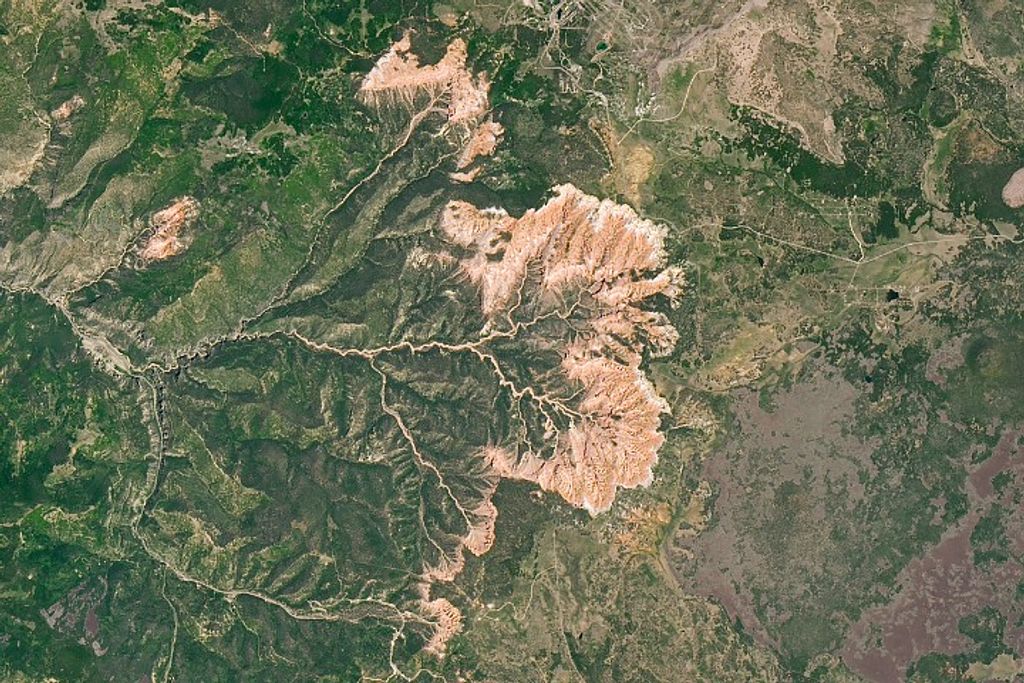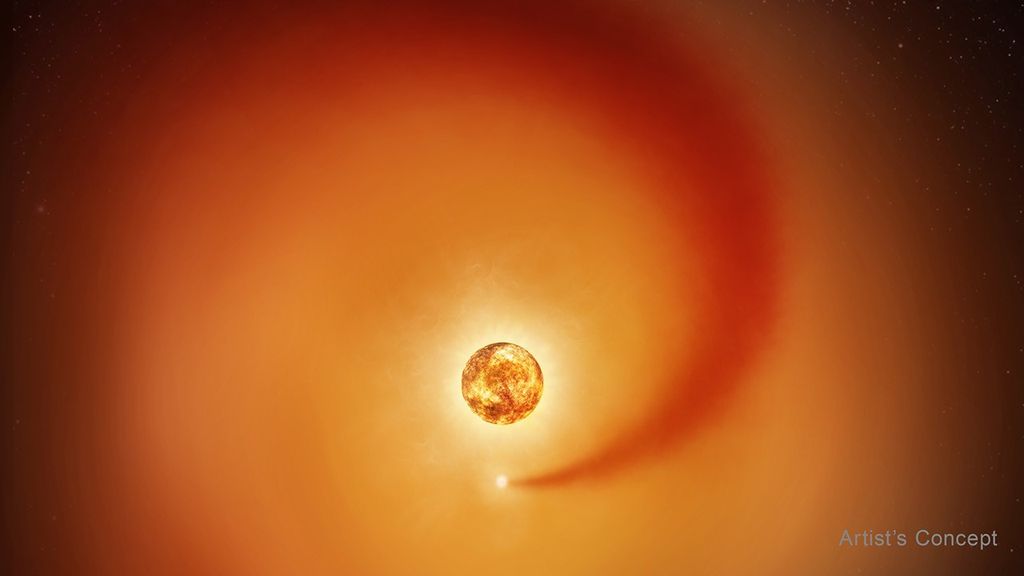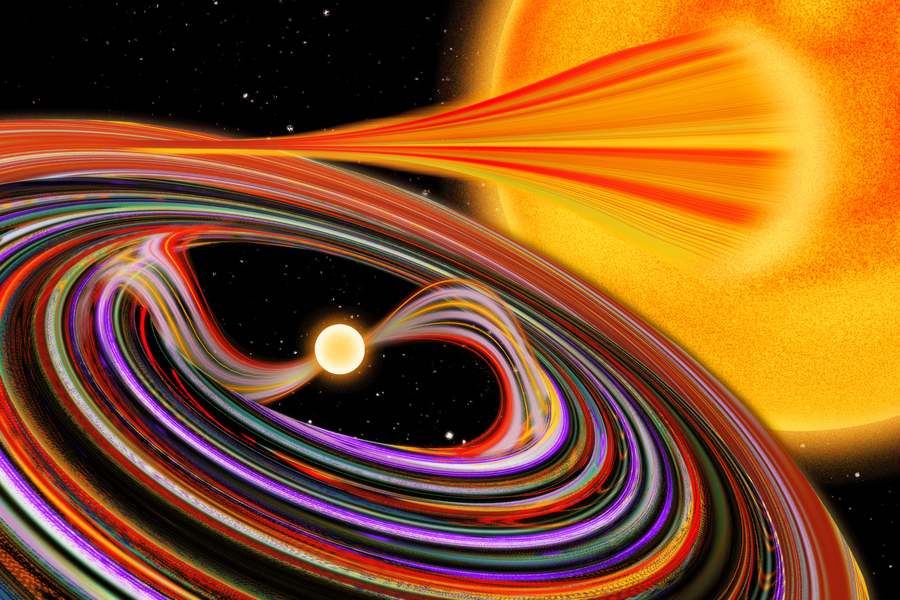1 min read
The Motion of RX J185635-3754 – The Nearest Neutron Star to Earth

This photograph is the sum of three Hubble Space Telescope images. North is down, east is to the right. The image, taken by the Wide Field and Planetary Camera 2, is 8.8 arc seconds across (west to east), and 6.6 arc seconds top-to-bottom (south to north). An arc second is a unit of angular measure. There are 3,600 arc seconds in 1 degree and 360 degrees in a full circle.
All stars line up in this composite picture, except the neutron star, which moves across the image in a direction 10 degrees south of east. The three images of the neutron star are labeled by date. The proper motion is 1/3 of an arc second per year. The small wobble caused by parallax (not visible in the image) has a size of 0.016 arc seconds, giving a distance of 200 light-years.
About the Object
- R.A. PositionR.A. PositionRight ascension – analogous to longitude – is one component of an object's position.18h 56m 34.99s
- Dec. PositionDec. PositionDeclination – analogous to latitude – is one component of an object's position.-37° 54' 0.0"
- ConstellationConstellationOne of 88 recognized regions of the celestial sphere in which the object appears.Corona Australis
- DistanceDistanceThe physical distance from Earth to the astronomical object. Distances within our solar system are usually measured in Astronomical Units (AU). Distances between stars are usually measured in light-years. Interstellar distances can also be measured in parsecs.About 200 light-years
- DimensionsDimensionsThe physical size of the object or the apparent angle it subtends on the sky.This image is 8.8 arcseconds (0.1 light-years) across. Diameter: 12 miles (20 km). Speed: 240,000 miles per hour (389,000 kilometers per hour). Proper Motion: 1/3 of a second of arc per year. Magnitude: V26
About the Data
- Data DescriptionData DescriptionProposal: A description of the observations, their scientific justification, and the links to the data available in the science archive.
Science Team: The astronomers who planned the observations and analyzed the data. "PI" refers to the Principal Investigator.Principal Astronomers: F. Walter, J. Lattimer, M. Prakash, S. Wolk, L. Matthews, P. An (SUNY Stony Brook), R. Neuhaeuser (Max-Planck-Institut fuer Extraterrestrische Physik). - InstrumentInstrumentThe science instrument used to produce the data.HST>WFPC2
- Exposure DatesExposure DatesThe date(s) that the telescope made its observations and the total exposure time.October 6, 1996, March 30, 1999, and September 16, 1999, Exposure Time: 6 hours
- FiltersFiltersThe camera filters that were used in the science observations.F606W (V)
- Object NameObject NameA name or catalog number that astronomers use to identify an astronomical object.RX J185635-3754
- Object DescriptionObject DescriptionThe type of astronomical object.Neutron Star
- Release DateNovember 9, 2000
- Science ReleaseHubble Sees Bare Neutron Star Streaking Across Space
- CreditNASA and F.M. Walter (State University of New York at Stony Brook)
Share
Details
Claire Andreoli
NASA’s Goddard Space Flight Center
Greenbelt, Maryland
claire.andreoli@nasa.gov
































